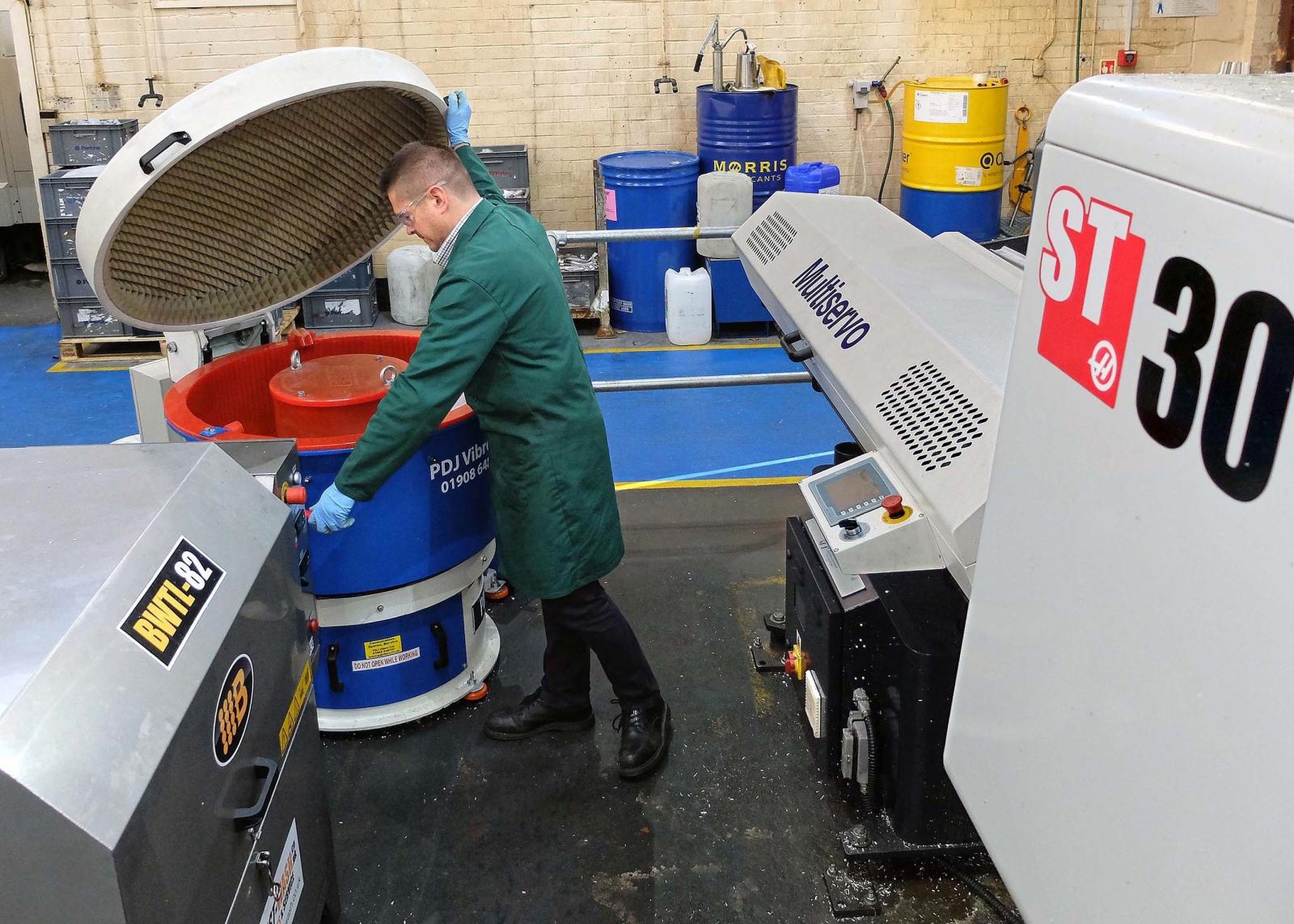
Peterborough subcontractor Westcombe Engineering has installed a new manufacturing cell to produce increased quantities of a family of aluminium engine components for Perkins Engines.
It comprises a Haas ST-30 CNC lathe with short bar feeder, a Blast Wash top-loading washing machine and a vibratory bowl finishing machine from PDJ Vibro, the second to be installed in the factory.
Now owned by Peterborough City Council, Westcombe Engineering was established in the early 1970s by philanthropist Royce Westcombe to provide work and development opportunities in manufacturing for people with physical and mental disabilities, of whom 10 currently work at the factory. Together with seven support staff, they produce milled and turned parts mainly for nearby Perkins Engines and its parent group, Caterpillar.
Westcombe Engineering’s general and commercial manager, Andrew Lesiw explained, “Our latest manufacturing project is a good example of the applications input that we can provide.
“We redesigned the engine parts so that they could be produced automatically and cost effectively from extrusion fed by a bar magazine, rather than from manually loaded castings.”
When the subcontractor was previously making the parts by the latter production route, porosity in the castings resulted in a significant level of costly scrap. Often, the porosity became apparent only after a lot of value-added machining had been completed, which further increased the unit manufacturing cost of each good part.
The new process, which became operational in March 2017, eliminates the problem and also reduces the amount of metal removal, allowing Westcombe Engineering to save production costs and reduce prices for the customer while still maintaining a good profit margin. It is important for the subcontractor to be competitive to ensure long-term financial viability, as there are no subsidies underpinning the operation.
While the latest vibratory bowl, a 100-litre capacity model, is dedicated to finishing these specific Perkins engine parts, the original 220-litre bowl was installed in 2012 to automate deburring and edge-breaking of components machined in all of Westcombe Engineering’s machine tools from aluminium, cast iron, brass, stainless and mild steels, exotic metals and plastics. The intention was to eliminate mundane, manual finishing tasks and improve consistency of finish and the PDJ Vibro equipment succeeded in achieving both aims.
Based on the first bowl’s reliability and effectiveness, Westcombe Engineering returned to PDJ Vibro to order a smaller finishing machine for integration into the Perkins engine cell.